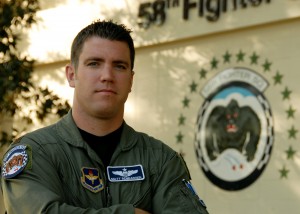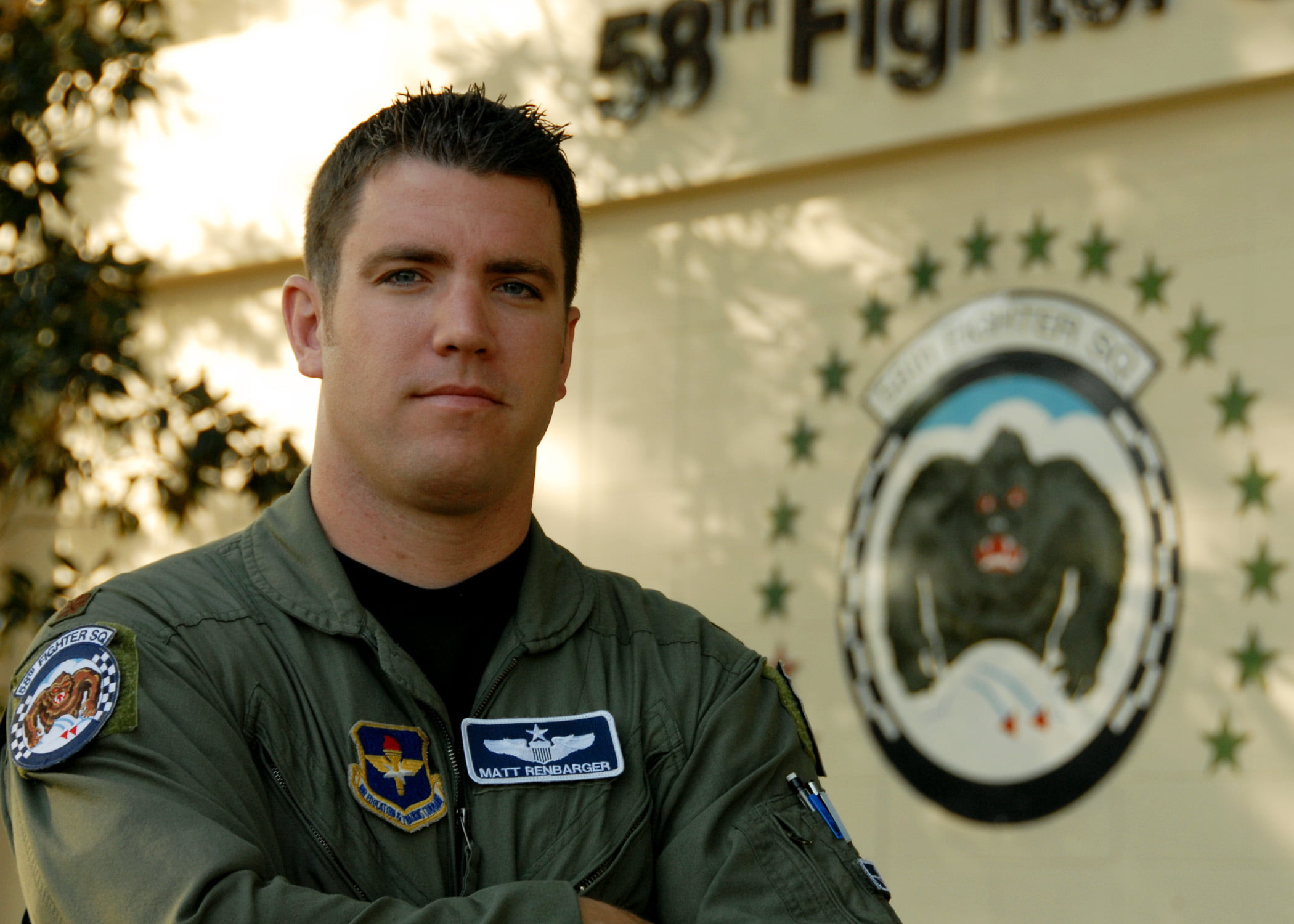2013-07-01 During a visit to the 33rd Fighter Wing at Eglin AFB, Lt Col Renbarger, 58th Fighter Squadron Commander, discussed his role in the training of F-35 pilots and the impact of the F-35 on the evolution of the USAF.
SLD: What is role at Eglin?
Lt Col Renbarger: I have been with the F-35 program for a number of years. I was a Viper pilot; I am now an F-35 pilot. I graduated from the USAF Academy in 1999, and I was here from 2009 to 2012 and then spent a year with ACC and now am back with the 58th.
I’m commander of the 58th Fighter Squadron and our mission is to produce qualified F-35 pilots. We have been flying 1B aircraft but have the new 2A aircraft, which we have just started flying.
We’re the initial cadre that started up training ops in AETC and now we’re going to start populating PTC1, which is Luke Air Force Base, and then our first ops base, also.
The first pilots will come through here.

We currently are doing six man classes and we’re doing a class every six weeks.
By the time my two years of duty in front of me is completed, we will be close to training new AF pilots who will come directly from their training aircraft to the F-35, without having prior legacy flying experience. This will be a new point for the USAF with pilots without the legacy flying experience shaping their F-35 understanding.
SLD: As you start to use DAS, what do you expect it to bring to the USAF?
Lt Col Renbarger: We can’t wait to use the new toys and see what they bring to the fight.
It is a revolutionary capability to be able to do what DAS is going to do for us. We will have 360-degree awareness, where I’ve got a set of IR cameras all over the jet that give me unprecedented knowledge of what’s going on in the IR spectrum around me that I have not had before.
SLD: Could you contrast that with your experience as a legacy F-16 pilot?
Lt Col Renbarger: In an F-16 I would have a radar and I would have targeting pod and I would have some other sensors on the airplane that were never fused together.
I’m the one doing the fusion in the F-16.
In the F-35, the plane takes the DAS, it takes the radar, it takes the EW system and it fuses all that together and melds that into one common picture. It allows me now to have much more situational awareness, which gives me situational control.
Now I can make smarter decisions as a fighter pilot to provide air superiority for the Air Force.
And air superiority is more than just killing other fighters. It’s killing SAMS, it’s doing all the things that the Air Force does and what we do specifically as fighter pilots is we allow control of the air to give us control of other spheres of influence, also.
SLD: How important has the working relationship with the USMC at Eglin been for you?
Lt Col Renbarger: It has been very important. We do things they don’t do; and they do things we don’t do.
But we share our experience all the time, and we are creating a set of lessons learned on an ongoing basis, and that will occur with the USN as they start the training process on their new F-35Cs on the way to Eglin.
SLD: A little understood aspect on the USAF side is how the aircraft will allow you to connect your experience of the past decade with regard to close air support with the core mission for providing air superiority. How will the F-35 play into combining these two experiences or competencies?
Lt Col Renbarger: It is a crucial element for forging the competencies. It’s even more multirole than multirole. The F-35s are as flexible and as equally good or better than all of our legacy platforms, and all the missions that the A10, the F-16, the F-18, all the airplanes that the F-35 is replacing, performed; it’s going to be able to do those missions and more in one platform. In the F-35s data links will work back and forth and talk to each other and we can share more data.
SLD: How does the touch screen fit into this approach?
Lt Col Renbarger: It’s a big 8X20 inch screen that’s split into two separate screens that are run by two different computers. And in each one of those, I can set up a modular section on that side to make that whatever I want.
So, if I want to have a sensor up here on this side and something different on the other side, I can decide as a pilot where I want to have anything and completely customize my experience and what gives me the most SA during a flight on my big screen.
It’s even more modular than, say, an iPad.
SLD: How does this allow for transition among support for your various missions?
Lt Col Renbarger: I can highlight the capabilities most relevant to the mission set.
And then I can very quickly transition between the different mission sets when I have to go from one to the other.


